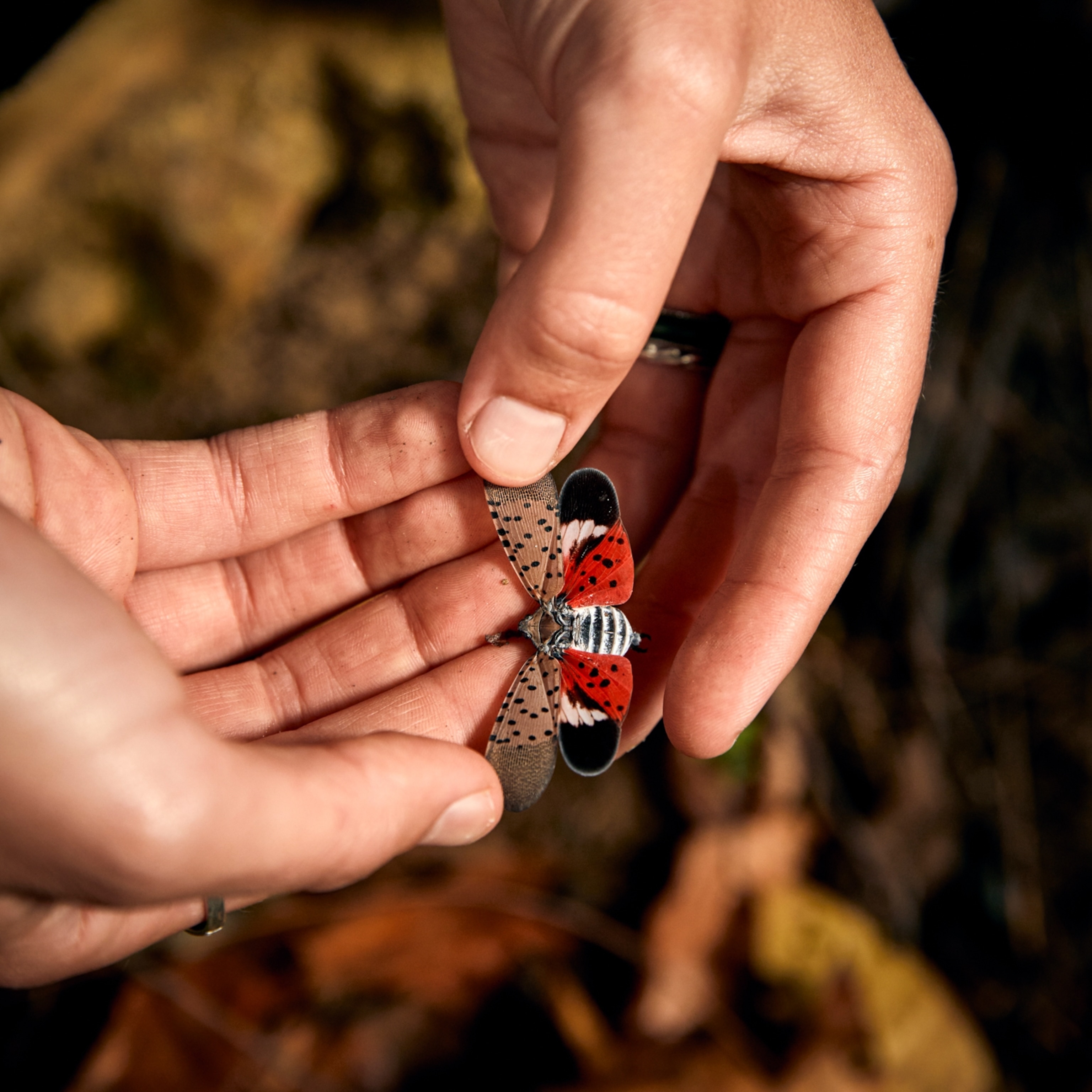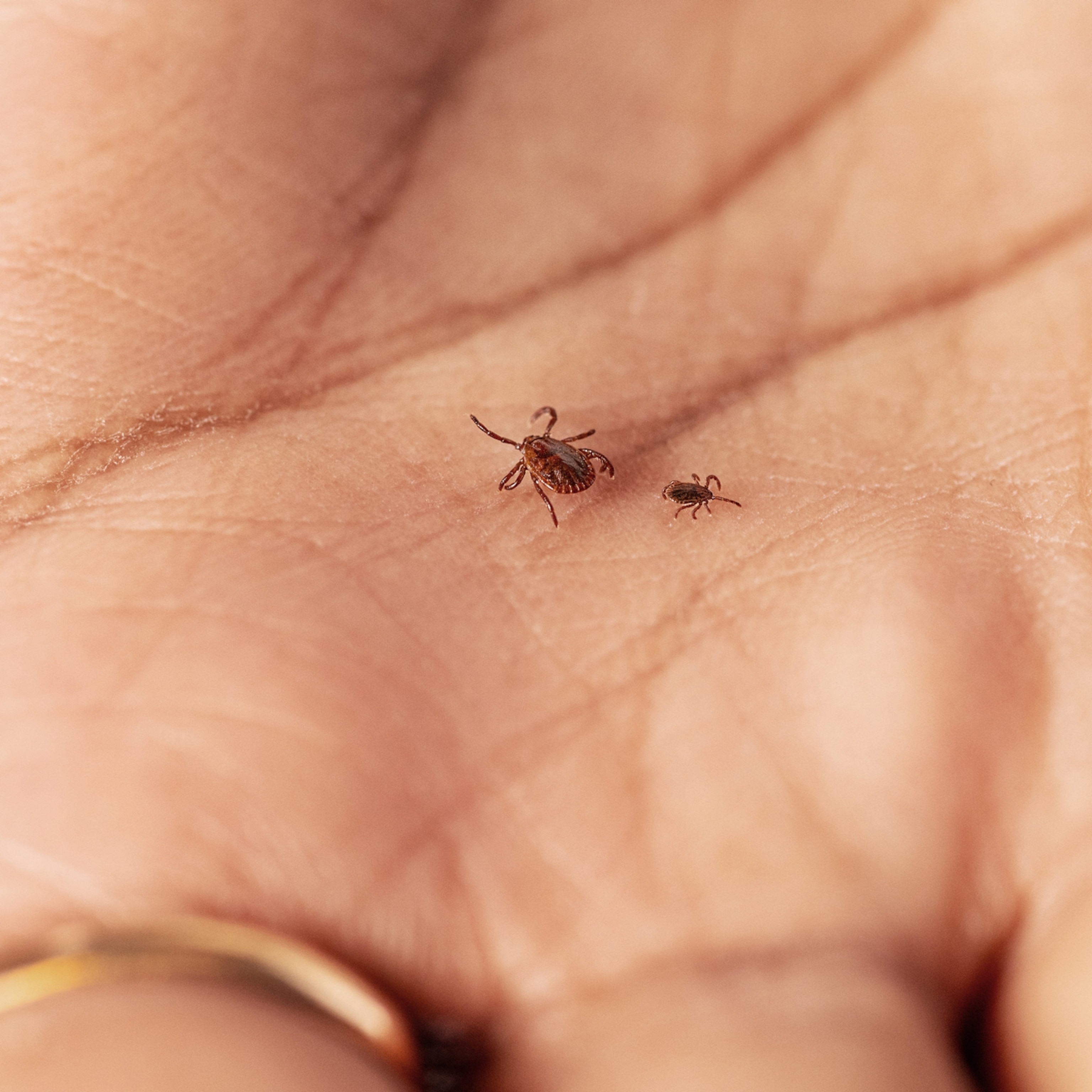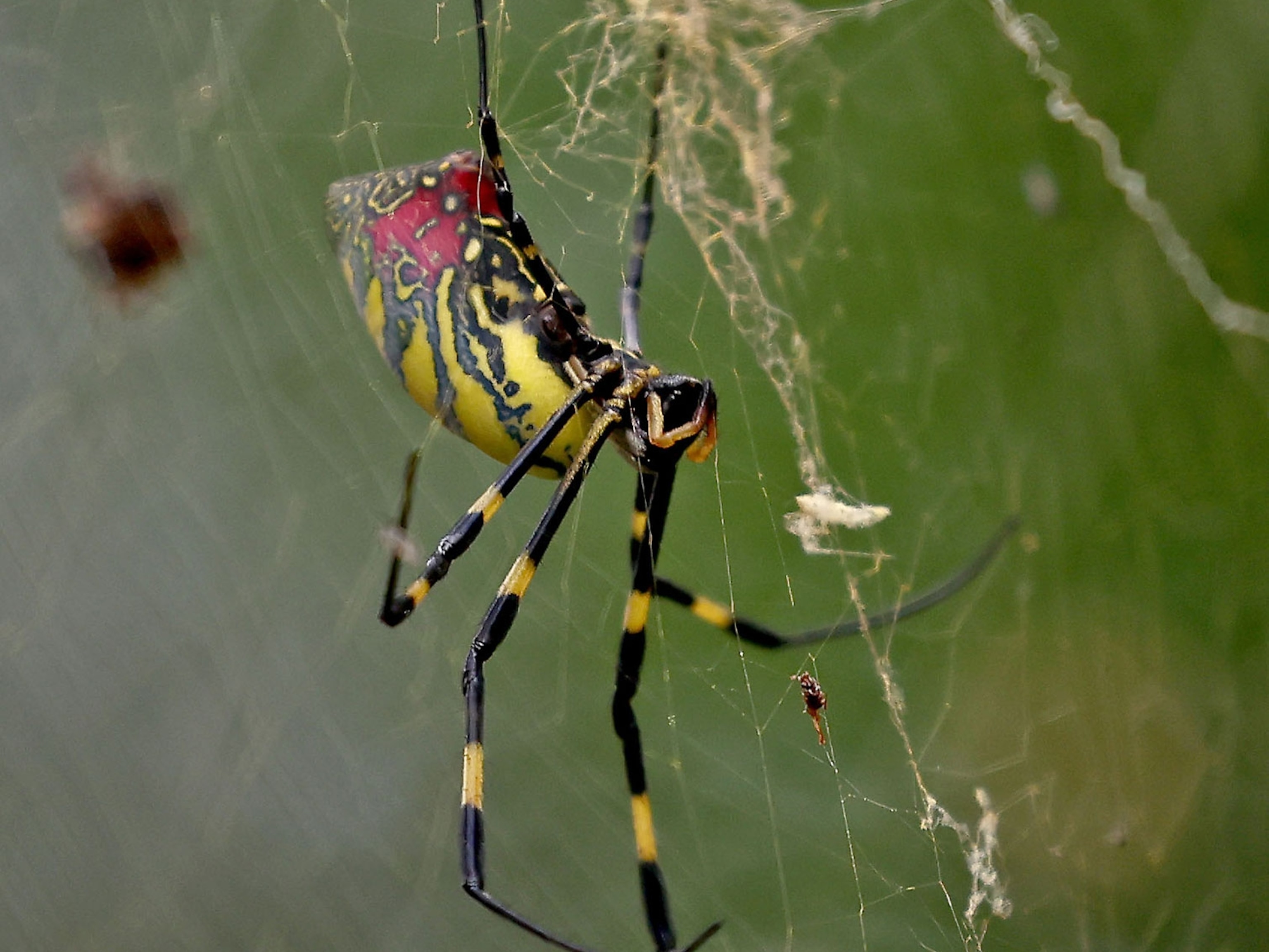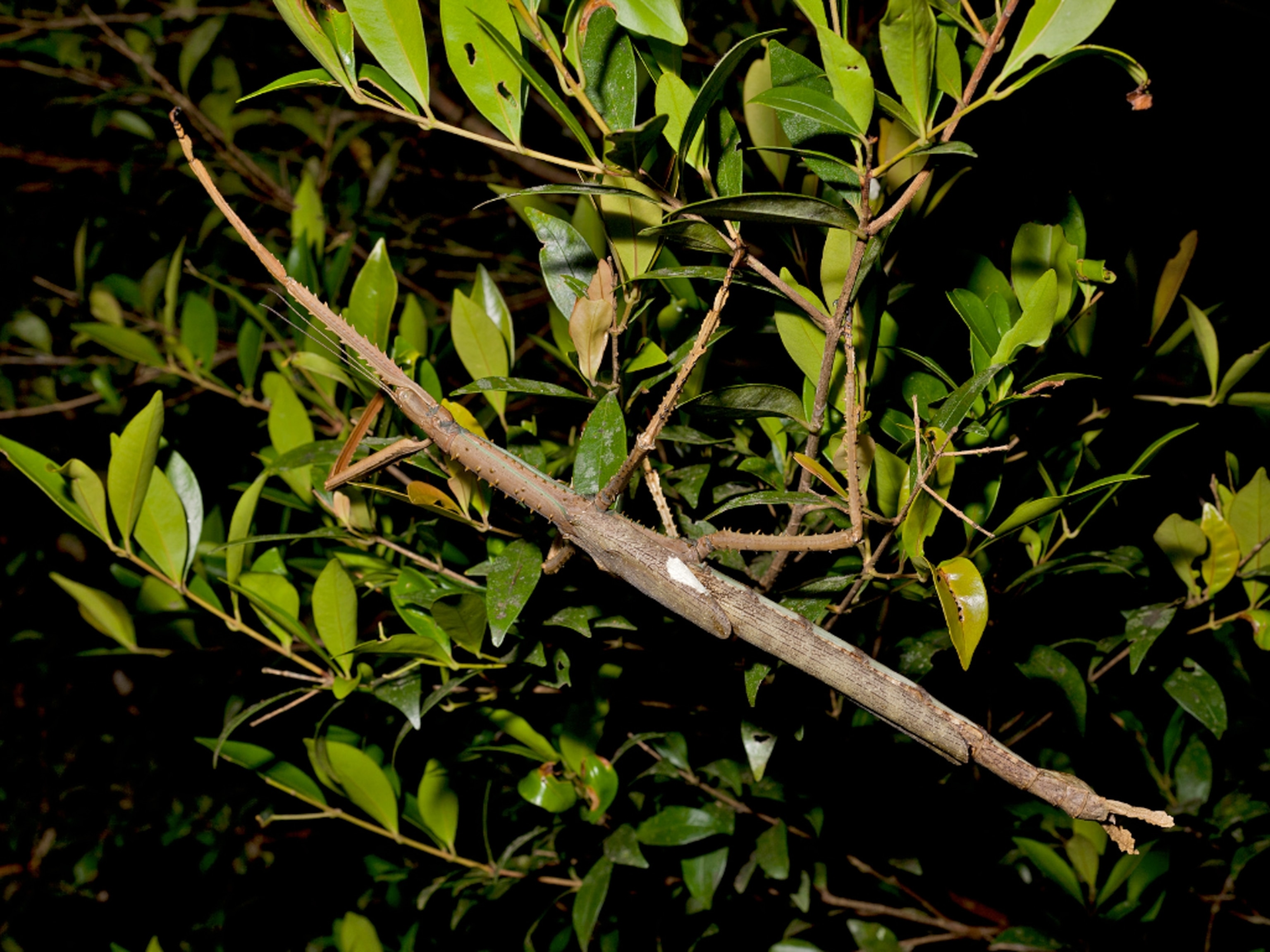
Many trees would be lucky to be as beautiful as Ailanthus altissima, also known as tree of heaven, a deciduous tree with quill-shaped leaves, light gray bark, and red-and-yellow-tinted seeds that resemble a sunset.
But outside its native China, the plant has also earned the nickname “tree of hell,” due to its highly invasive nature: it can grow three feet a year, cloning itself via underground “suckers,” or through the hundreds of thousands of seeds each tree produces every year.
The notorious plant wipes out native species with its dense thicket and toxins it excretes into the soil. It also emits a bad smell from its flowers; has no natural predators; and serves as a sanctuary for destructive invasive insects, such as the spotted lanternfly. (See pictures of 11 sacred and iconic trees.)
Since its introduction by enthusiastic horticulturists to the United States nearly 240 years ago as a shade tree and botanical specimen, Ailanthus has spread to all but six U.S. states, and has gained a foothold on every continent except Antarctica.
But there may be a new weapon for fighting back against one of the most invasive species on the continent.
Scientists recently isolated a fungus that kills the tree: a microscopic organism called Verticillium nonalfalfae, which is likely native to Pennsylvania, Virginia, and Ohio.
“Up until we discovered this fungus, it really didn't have an Achilles heel,” explains Joanne Rebbeck, a retired plant physiologist with the USDA Forest Service who has studied the effects of fungus on Ailanthus.
Scientists are now experimenting with using the fungi to kill tree of heaven, by hacking the trunk and directly injecting the pathogen into the plant.
The results of one study, published in September 2020 in the journal Biological Control, found the fungus to be “highly effective” as a control against Ailanthus.
It would be a dream come true for ecologists who want to preserve native ecosystems and insect diversity, but scientists must first ensure that introducing fungi doesn’t backfire and create an even bigger problem.
From cane toads in Australia to Eurasian weevils in the western U.S., underestimating the ecological risks of biocontrol—using one living organism to suppress another—has a history of backfiring.
Bug motel
Ailanthus is a plague throughout North American forests, pushing out native plants, such as red oak, while damaging infrastructure and farmland by wrecking sewers, pavement, and building foundations.
The tree thrives in fire-damaged or human-disturbed areas, including along highways, and once it takes root, it’s nearly impossible to remove. Ailanthus grow by eight feet in height in its first year, cloning itself through underground roots called “suckers,” or via hundreds of thousands of windblown seeds shed by a single tree. The tree, which can live a century, reaches heights of 70 feet.
The species is also allelopathic, meaning it affects the growth of other plants through the release of chemicals that can prevent other plants from growing near it. (Read how U.S. national parks are overrun by invasive species.)
The only strategies farmers and land managers currently have against Ailanthus are applying powerful herbicides or periodically chopping the trees down.
But “within a year, it just comes back bushier and more aggressive,” says Rachel Brooks, a Ph.D. student formerly at Virginia Tech’s School of Plant and Environmental Science and co-author on the 2020 study. “It becomes pretty expensive and labor intensive.”

To make matters worse, Ailanthus acts like a motel for other invasive species, such as the brown marmorated stink bug and Asiatic shot-hole borer, two insects that have damaged U.S. forests, particularly those with maple species, not to mention many commercial crops, such as apples and peaches.
But none are attracted to it like the spotted lanternfly, one of the most prolific and detrimental invasive insects in North America. These colorful planthoppers swarm the weed by the thousands and drink its sap before spreading to other agricultural plants.
“They’re both from China, so they're reconnecting with their native species,” explains Kristen Wickert, another of the 2020 study’s coauthors and an entomologist and plant pathologist at the West Virginia Department of Agriculture, who also serves as the state’s spotted lanternfly coordinator.
Promising results
In 2002, a scientist in south-central Pennsylvania noticed a stand of tree of heaven was mysteriously dying, their leaves withering and turning brown. By 2008, more than 8,000 trees had perished in Tuscarora State Forest. By studying those dead trees, the scientists were able to isolate V. nonalfalfae as the cause of the die-off.
The fungus kills Ailanthus by infecting it with vascular wilt disease, essentially clogging the plant’s vascular system and starving it of water. The plant slowly begins to wilt, dropping fungal spores into the soil where the V. nonalfalfae life cycle begins anew.
“It doesn't just kill the single tree, it kills the root system, and it kills the neighboring [Ailanthus] trees, and you could really see these disease pockets spread out,” says Brooks. (Learn what we can all learn from trees.)
To test whether V. nonalfalfae harms plants other than Ailanthus, in May 2017, Brooks, Wickert, and other researchers plotted out 12 forested sites dominated by Ailanthus throughout Virginia and Pennsylvania. Then they randomly picked 656 trees to inoculate with the fungus, hacking the trunks and squirting fungal spores into the wounds. They returned to the trees every few months to take photos and measure the decay.
They found the fungus killed Ailanthus, but did not spread to non-target trees, leading researchers to theorize that local plants have evolved defenses to V. nonalfalfae that Ailanthus hasn’t.
Safety first
Before they launch this fungus on the offensive, experts want to be sure it’s safe for other plants, wildlife, and crops in other states where it may not be native.
Raghavan Charudattan, a retired plant pathologist who started a biotech company, BioProdex, has spent five decades studying ways to control weeds with fungi and other biocontrols. Charudattan recently received funding from the U.S. Forest Service and the USDA to study the use of V. nonalfalfae against Ailanthus.
“My job in particular is to test a bunch of crop species, which are known to be susceptible to other Verticillium species,” which could include corn, radishes, and potatoes, says Charudatta. He estimates it could take up to three years to clear regulatory hurdles before the fungus could be available as a commercial product in stores. (Read about the world’s oldest fungi, found in fossils.)
There is a precedent for such a product: DutchTrig, which combats Dutch elm disease, a devastating plant infection found throughout Europe and North America, and caused by several fungi in the family Ophiostomataceae. Researchers found that injecting V. albo-atrum, a fungus in the same genus as V. nonalfalfae, worked somewhat like a vaccine for elm trees, boosting their natural defense mechanisms and protecting them against other fungal pathogens. The product is available in at least seven countries.
Scott Salom, a forest entomologist at Virginia Tech who worked with Brooks and Wickert, cautions that the discovery of a natural tree-killer is only a first step in restoring damaged ecosystems.
In addition to eliminating such invasives, scientists and governments should also work hand-in-hand to restore native landscapes, he says, which in turns allows biodiversity of insects and native mammals to thrive.
“We just don't treat the trees and watch them die, we have to make sure that native plants are the plants that take over,” Salom says.
“From an ecological perspective, it's very important to see it all the way through.”








